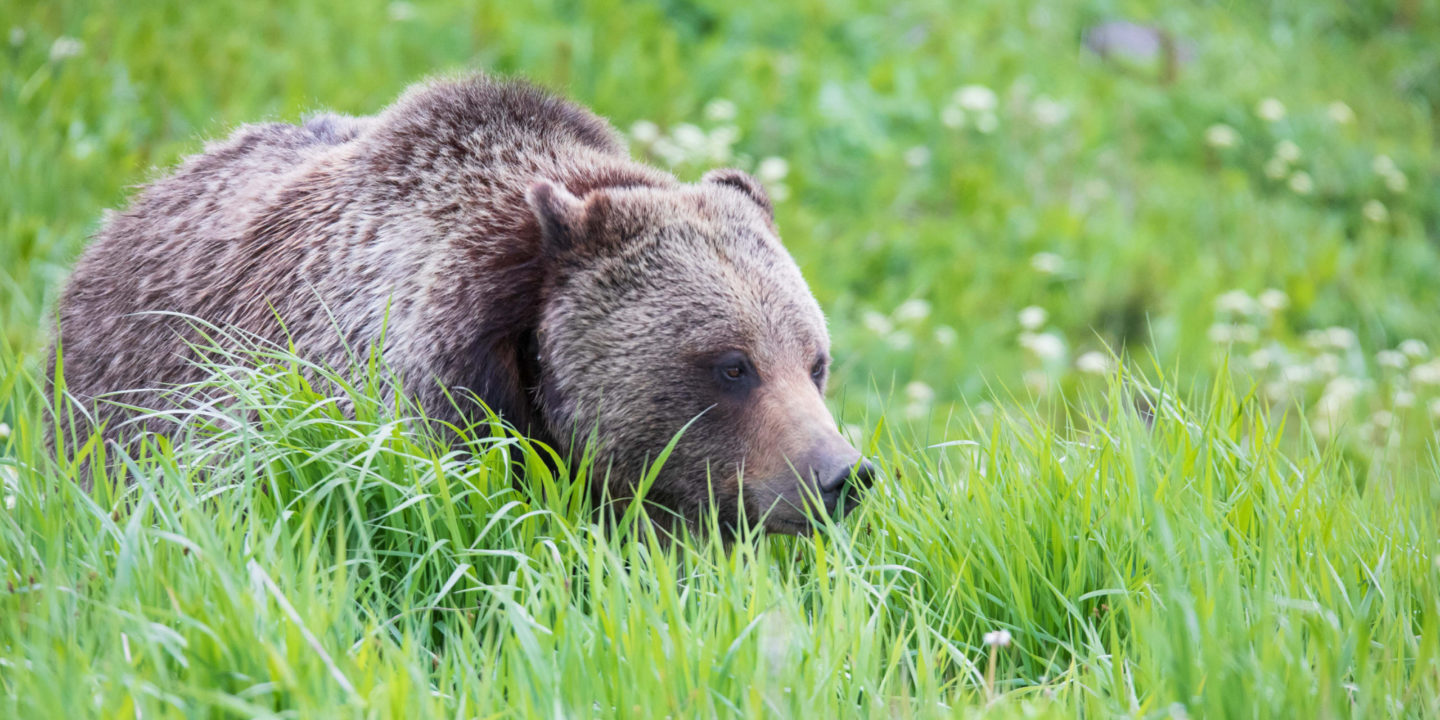The 2.2 million acres of landscape that makes up Yellowstone National Park has been regarded as wondrous and unique since humankind first discovered it. Native Americans in the region were the first humans to traverse that wild landscape approximately 11,000 years ago, utilizing the ample resources of the region to survive. There was the lodgepole pine, which grows tall and straight in stature, making it perfect for the construction of teepees and lodges. Due to the volcanic activity in the area minerals such as obsidian were very accessible, which can be honed to a point finer than metal and therefore used for spearheads, arrowheads and knives. Then, there was, and still is, the wildlife. Elk, bison, deer, moose, beaver, rabbit, bear, wolf, fox, coyote… to name a few.
These animals were a vital source for food, as well as fur to craft clothes that helped those ingenious peoples survive a climate that could host an eight month long winter where 90+ inches of snow could fall and temperatures could drop well below freezing. This was also the attraction for fur trappers and anglo-explorers who began moving into the region in the early 1800’s. This well-watered landscape that would one day host the first ever national park harbored a healthy population of North America’s largest rodent: the beaver. Throughout the 1800’s, beaver fur was in great demand; this pelt was primarily used to make a high quality felt that was durable, waterproof, and, (unfortunately for the beavers), in fashion. Mountain men would trek northwest up the Mississippi and Missouri Rivers hoping to make a living by harvesting the fur from this aquatic mammal.
Visitors to Yellowstone National Park today do not make the journey to this wild landscape in hopes of finding resources for survival or riches for highly coveted pelts, but they do typically have one thing in common with early explorers in the region – they are seeking wildlife. Nowadays those traveling to Yellowstone wish to enjoy a place where preservation has saved and restored a piece of North America from being paved over and developed. In 1872 congress chose to protect a little over 2 million acres from “from injury or spoliation, of all timber, mineral deposits, natural curiosities, or wonders within.” Thanks to that decision we can still spend days, (perhaps even weeks), exploring this park to seek out wildlife roaming in habitats that they’ve evolved, survived and thrived in since before humankind began to dramatically alter their world.
If you are traveling to Yellowstone National Park with the primary goal of looking for animals, here are some wildlife hotspots that you cannot miss! Keep in mind though, while some wildlife may travel near, or across, roadways, and it is not uncommon that you’ll be sweeping miles of landscape with binoculars to only spy a distant dot that could prove to be as exciting as a wolf pup, or as common as a raven (not to discredit those intelligent scavengers). That is why it is important to keep in mind that hiring an experienced guide can have its benefits in helping to make your search more efficient, and also easier, since a quality tour company will make sure to provide you with high powered binoculars and spotting scopes which can be essential in spotting some of the most distance animals.
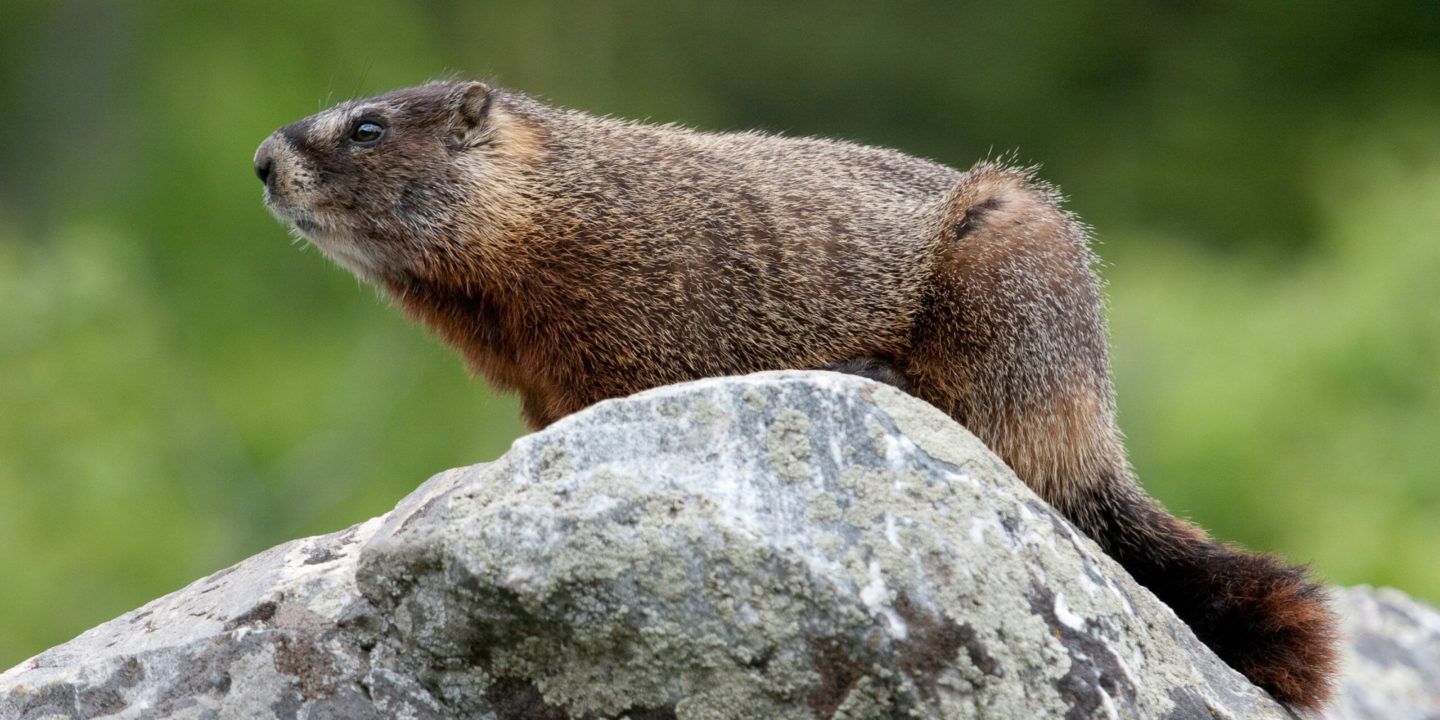
Lamar Valley: the “North American Serengeti”
Nearly 80% of Yellowstone National Park is forested, which is great for wildlife habitat, but not so great in looking for wildlife! It is typically not easy to spot an animal in a densely forested area until you are too close to it for comfort. This is why focusing on open, grassland or sagebrush steppe habitat is often best to expedite your wildlife search. The Lamar Valley, which is in the northeastern corner of the park, is a perfect example of this.
During the last ice age just 20,000 years ago there was a glacial dam that resulted in a large lake to form over the expanse of where the Lamar Valley is today. Large quantities of sedimentary soil settled on the lakebed, burying the volcanic lava flows that oozed through the area intermittently over the past 2.2 million years. Eventually the glacial dam failed and the lake drained, leaving behind a layer of sedimentary soil that is richer in clay, therefore holding more water and allowing more grassland and meadow habitat to outcompete the forest.
Pronghorn
This is a preferred habitat for many herbivores native to Yellowstone National Park, including North America’s fastest land mammal, the pronghorn. Pronghorn can reach speeds of 60-70mph, faster than any predator in the park! Though not a true member of the antelope family, pronghorn look very similar, and are often called such. Fascinatingly enough, genetic tests have revealed this speedy animal is more closely related to the giraffe, so keep that in mind when observing this unique ungulate.
Bison
North America’s largest land mammal, the bison, also prolifically roams about the Lamar Valley. One of the largest existing herds of bison thrive in this region, out of nearly 4,680 bison total within the park approximately 73% roam that northern portion of Yellowstone. The Lamar Valley has also been vital to the survival of bison. In 1902 there were a mere 22 bison left in Yellowstone National Park. Over-hunting and poaching nearly led to the extinction of this once abundant animal, and fortunately early wildlife managers within the park established the Lamar Valley Buffalo Ranch to begin protecting the species. This historic ranch can still be seen in the Lamar Valley, and can be thought of as the site of one of the first wildlife management success stories within the world’s first national park.
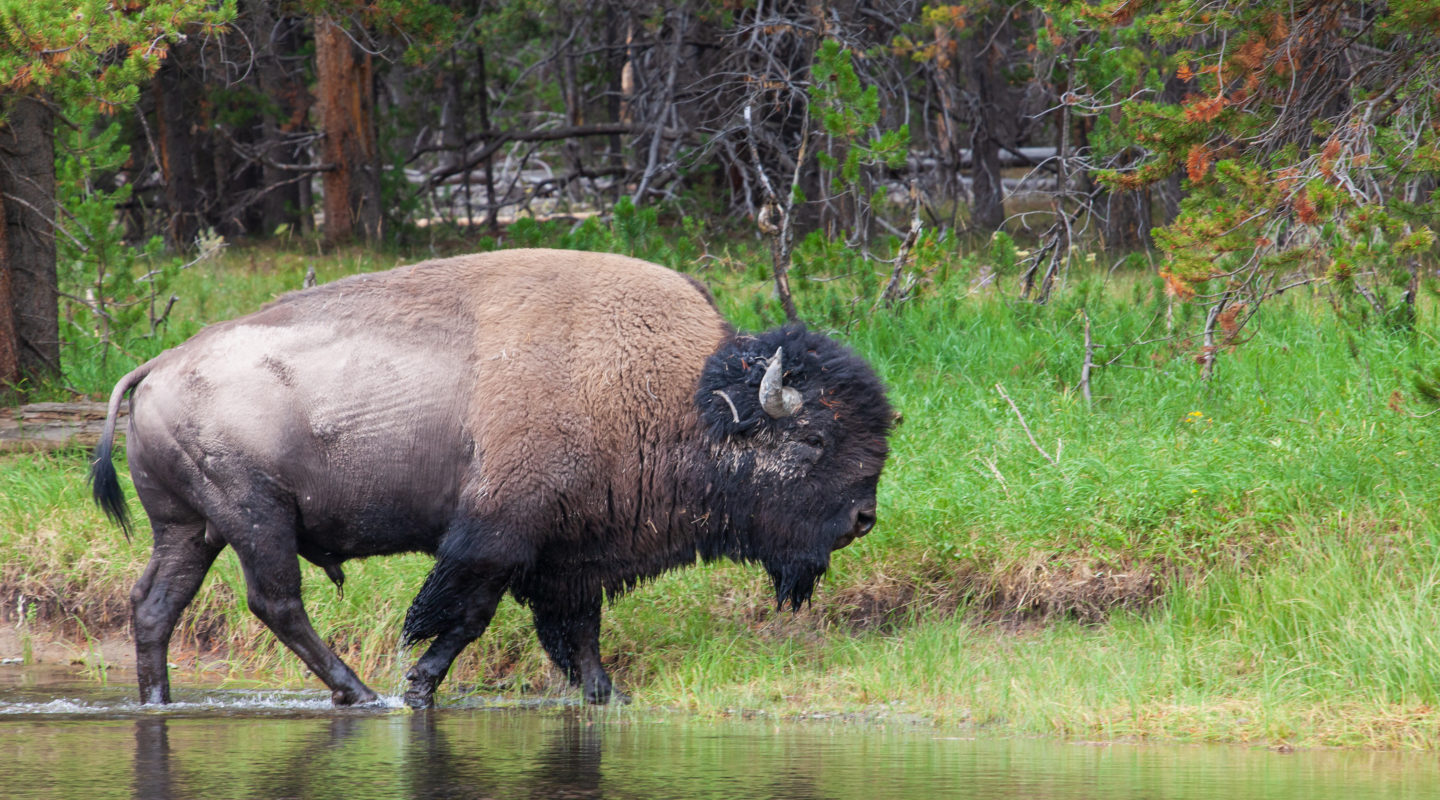
Wolf
Bison are not the only wildlife species that have the Lamar Valley to thank for their survival in the Greater Yellowstone Ecosystem. Many visitors to Yellowstone have this animal at the top of their list to see, much like how this predator is at the top of the food chain within the park. If you haven’t guessed the animal yet- it’s the wolf! This large canine was thought to have been extinct by 1925, due to humans extirpating it from the lower 48 States of America. Initially this animal was despised due to its efficient ability to hunt elk, which was an important food source for early settlers in the wild west, and the unfortunate fact that the wolves found the cattle some of these settlers were raising for food and income to be easy prey. Wolves continued to thrive in the Canadian Rockies, but to our knowledge did not return to the lower 48 States until 1995 when biologists brought eight gray wolves from Jasper National Park. These wolves were placed in acclimation pens throughout the Lamar Valley, where they remained for nearly a month before being released. The initial reintroduction was rocky, but overall successful, and in sum about 30 total wolves were released in Yellowstone from 1995 to 1997. An estimated 94 wolves now reside in Yellowstone National Park, and seeking them in open valleys is one of the best ways to find them.
When looking for wolves you must think like them, and one of the first things to consider is food. Elk comprise a majority of a wolf’s diet, so finding grasslands where these animals graze could lead to one getting to witness this efficient predator hunting, or feeding on prey it has already captured. Something else to consider is that elk are crepuscular, which means they are most active at dawn and dusk, so you might find yourself having to wake up before dawn to go out wolf watching or staying out into the early hours of the evening. There are even wolf den sites that can be observed from roadside parking areas where you might even get lucky enough to see wolf pups! This would need to be done during early summer though, since by August those pups are big enough to begin hunting with the rest of the pack and will no longer be tied to the den. Den sites however are not easy to find, as there is typically not a significant marker to reveal its location, which can be another benefit to having an experienced guide help to navigate the Lamar Valley!
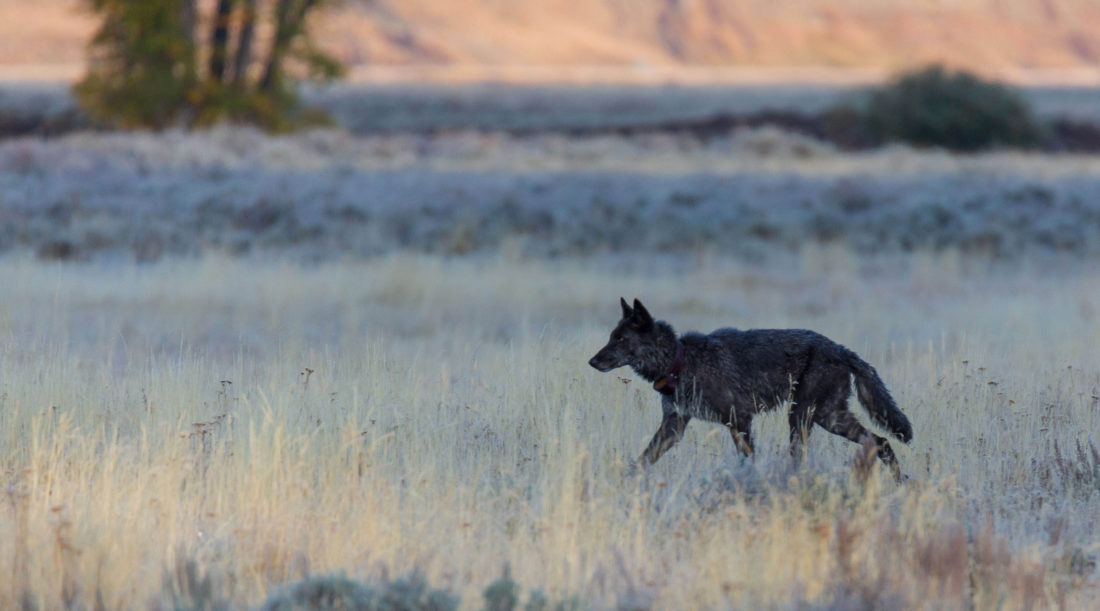
Grizzly Bear and Black Bear
Another exciting predatory mammal that has Yellowstone National Park to thank for the restoration of its population in the United States is the grizzly bear. Now when many think of bears, they think of black bears, which typically thrive in forested habitat and therefore can be trickier to find. Grizzly Bears in contrast evolved in more plains-like habitat which is one reason the wide open valley of Lamar can be a fruitful place to spot this animal! There are still forested pockets in and around Lamar that house healthy black bear populations, but if you are seeking the still-endangered and larger variety of North American brown bear do not miss out on this valley. As grizzly bears awake from hibernation throughout early summer they will spend much of their time digging up nutritious roots of native wildflowers such as biscuitroot, and grazing on fresh green grasses that grow prolifically in open landscapes.
Once June comes around, the elk who still remain in the lower valleys due to snow covering the mountainsides begin calving, and unfortunately an elk calf is a relatively easy 30 lbs snack for a grizzly bear. This variety of bear is also known to be an opportunistic carnivore, which means they will stalk wolf packs and either chase the canines off a kill or simply scavenge what they leave behind. It is important to note that by mid-July, the grizzly bear often moves up into the mountains for cooler temperatures and a different variety of food, making them more difficult to find in the Lamar Valley.
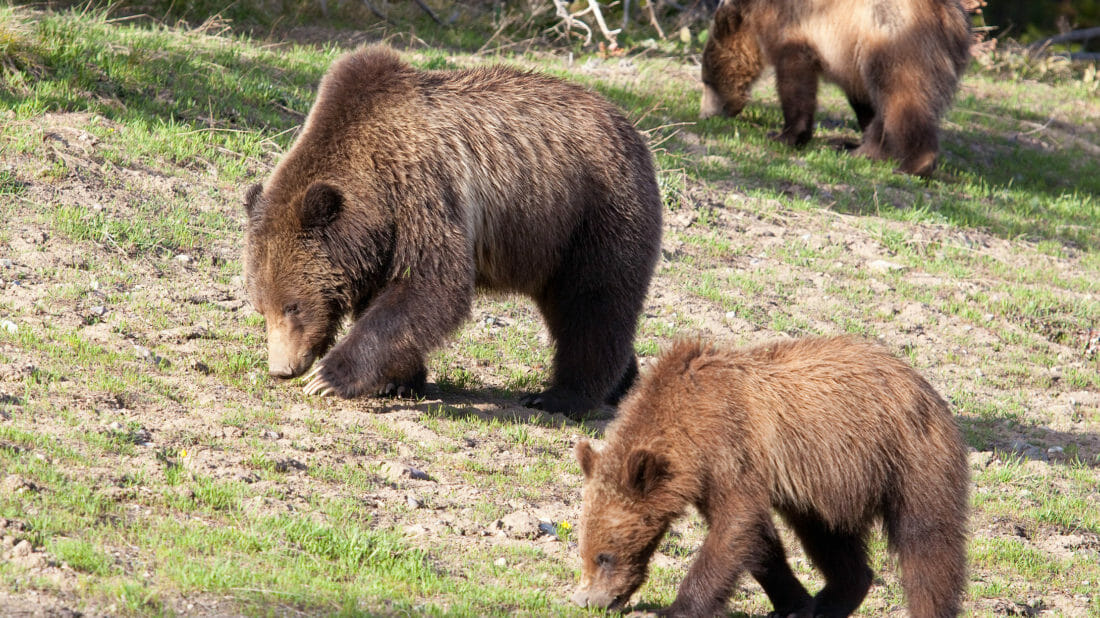
Moose
The grasslands within the Lamar Valley have been emphasized quite a bit so far, but that is not the only variety habitat to be found there. As mentioned prior, the higher levels of clay in the soil allow more water to be captured and held in the area, cultivating the growth of more moisture-dependent plant species. The varieties of riparian willow shrubs are a wonderful example of this! One animal that consumes quite a bit of willow is the moose, an often sought animal after in Yellowstone National Park. This is the biggest member of the deer, (or Cervidae if you want to get technical), family, potentially reaching a weight of 1200lbs and a height of 7-8 feet. This mammal prefers marshier habitat, so seeking them out along riverways, ponds and lakes is ideal. They typically will be feeding on the tender tips of willow or cottonwood branches, or perhaps submerging their broad-snouted head deep under the water to find aquatic vegetation.
As big as this animal is, they can be difficult to find. Groves of willow are often very dense and can easily conceal this half-ton beast, which is another incentive to find a practiced guide to help you spot a moose. Well-trained eyes might more easily pick up just a pair of ears, or the tips of antlers sticking out of some bushes. Just like the elk, (yet another member of that deer family), moose are also crepuscular, so this would be another animal you might have to wake up at dawn or stay out till dusk to find.
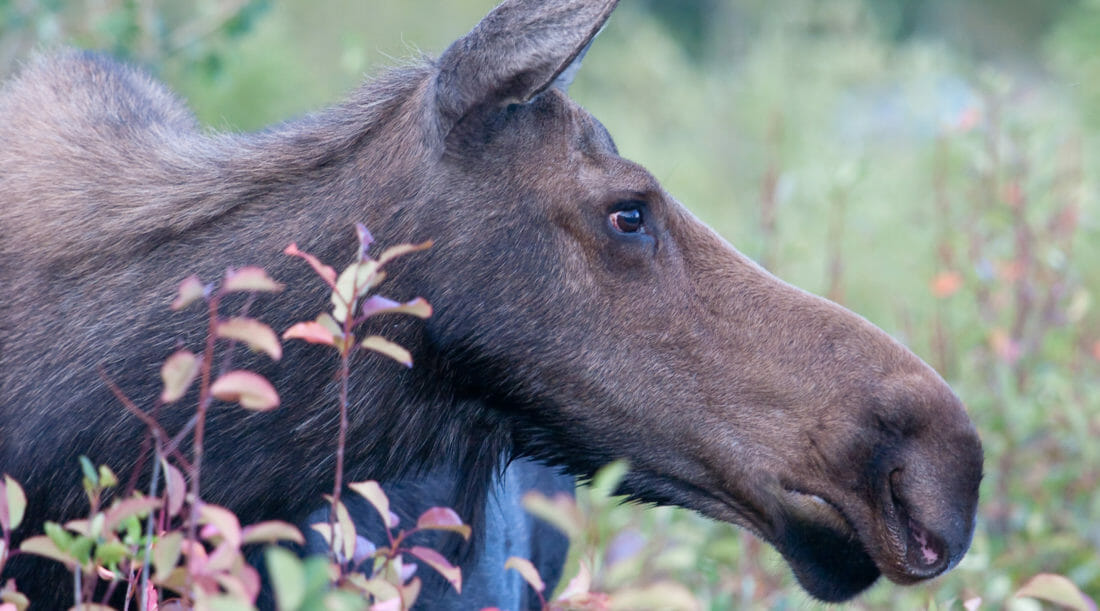
Bald Eagle and Great Grey Owl
Marshy and riparian habitat is also a great area to seek out a variety of bird life. Some birds remain in Yellowstone year round, such as the often sought after bald eagle. Bald eagles, one of the largest birds of prey in North America, primarily hunt for fish, which swim the currents of the Lamar River regularly. Keeping an eye out in the tree tops along waterways in the valley is always a good idea, since this bird of prey typically will seek fish from a vantage point before swooping down and grabbing one in its talons. One of the largest species of owl can also be found around the pockets of pines throughout the Lamar Valley, the great gray. Unless there is a nest site nearby, there is never a guaranteed spot to find this owl as it has a large range when hunting. However, your chances of seeing a great gray owl are higher because though it is a variety of nocturnal bird, this species is known to be more active in the day and often will hunt forest edges for small mammals.
Sandhill Crane
Another incredible avian species to view in the Lamar Valley is the sandhill crane, which migrates into Yellowstone for the summer where breeding pairs will raise their long-legged chicks known as colts in open grasslands near water. In reality there are hundreds of bird species that could be found in Yellowstone, which could be another benefit of hiring a guide who is familiar with those species, because suddenly your wildlife list could easily go from 10 or 20 animals, to perhaps the triple digits.
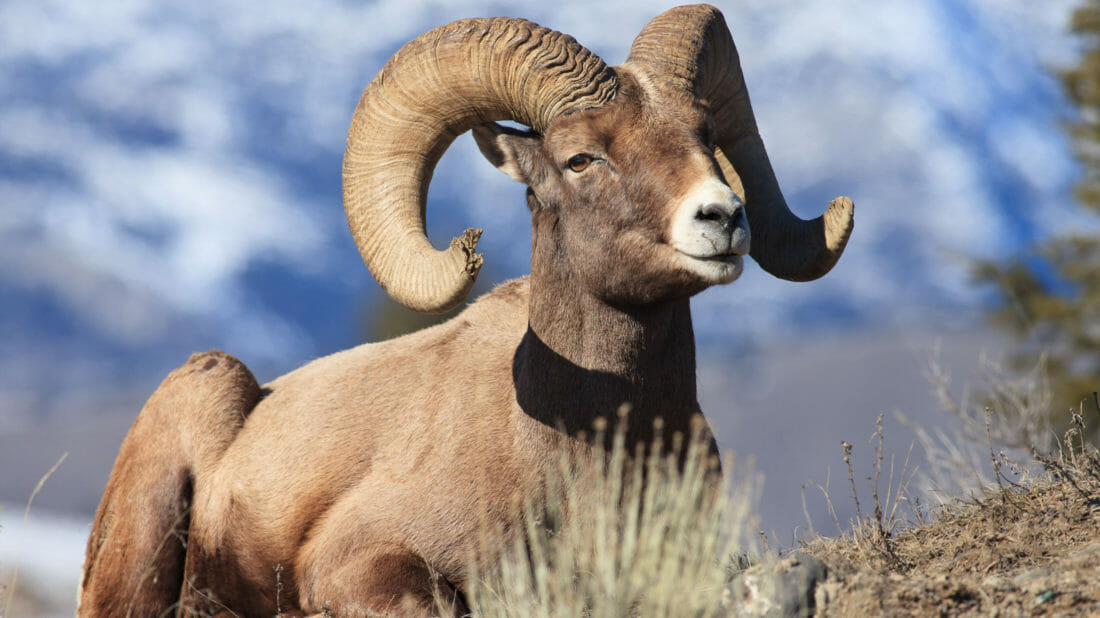
Mountain Goat and Bighorn Sheep
Something the Lamar Valley also has that can be easier to access than the rest of Yellowstone National Park is higher elevation cliffside habitat. Due to uplift of nearby mountain ranges, or glaciers carving steep cliffs into the sides of past lava flows, this type of extreme habitat houses two varieties of not often seen ungulates, the mountain goat, and the bighorn sheep. Both of these species prefer to survive in extreme mountain terrain where it is harder for predators to hunt them, and where they’ve evolved specific features to allow them to navigate near vertical terrain. Not only is their sense of balance astute, but both species have hooves designed to allow them to distribute their weight carefully upon tiny rocky outcroppings, and the bottom of those hooves are soft and rubbery which allows them to grip stone surfaces more effectively than say, a bison or elk.
Thunderer Peak at the northeastern-most end of the Lamar Valley is a wonderful location to scour rocky terraces for the creamy white mountain goats, and the cliffs on the eastern side of Mt. Washburn is a prime spot to seek out bighorn sheep from the Slough Creek area of the valley. Both of these climbing-savvy herbivores often require high power optics to observe because the terrain they prefer will potentially be hundreds of feet above your head.

